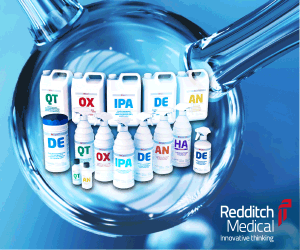Aicha Kabil, Occupational Health & Environmental Safety Division, 3M, looks at how to get the best out of reusable respirators
Reusable half-face and full-face respirators are a proven and effective means of ensuring that workers in a variety of environments receive a clean, safe air supply. Modern products are highly versatile and can be fitted with a variety of filters that reduce the wearer’s exposure to gases, vapours and particulates, depending on the filter used.
However, respirators will offer the wearer effective protection, with product working life maximised, only if pre-use and post-use checks, care and maintenance, and replacement of consumable parts are carried out at the right times and in the correct manner. Appropriate storage for any periods when products are not in use is also crucial.
Unlike single-use respirators, which can usually be assumed to be intact and ready for use on removal from their packaging, a series of checks should be made by the user before wearing a previously used reusable respirator.
The face piece should be checked for cracks, tears and dirt, while the inhalation valve may also harbour cracks and tears. While washing may be adequate to remove dirt, it goes without saying that any respirator that has cracks or tears is likely to offer significantly reduced protection, potentially exposing the wearer to hazardous levels of gas or particulates, and should not be used.
The next step is to check that the head straps are intact and have elasticity. Respirators whose straps have lost their elasticity are unlikely to offer a snug enough fit around the user’s face, potentially leaving gaps through which harmful gases and particulates can pass.
The user should also check that all gaskets are present and then remove the exhalation valve cover to examine the exhalation valve and seat for dirt, cracking or tearing. Once again, any product displaying either cracks or tears should not be used. For both half-face and full-face masks, a variety of spares are available and employers would be well advised to maintain a stock of spares for each product type used on site to allow any repairs to be undertaken immediately thus avoiding costly employee downtime. The lifetime of lenses can also be prolonged through the use of peel-off lens covers.
Once the user is satisfied on all these counts, and the correct filters – either gas or particulate – are attached, the product can safely be worn.
One issue that can significantly affect the protection offered by reusable respirators is what happens to them when they are removed mid-shift, for example for lunch or a comfort break, and when the user returns and puts them on again. Unfortunately, it is not unheard of for the user to remove the device while still in the hazardous area. This is dangerous enough in itself but the problem is exacerbated if the respirator is then left in the area where harmful contamination can settle on the interior of the respirator, meaning the next time it is worn, the user is breathing potentially highly toxic air. Employees should be instructed, therefore, always to don the respirator before entering the affected area and not to remove it until they are well clear.
After use, reusable respirators should be cleaned and, if required, disinfected. The user instructions with the product will contain the cleaning and disinfection requirements. Masks are generally cleaned with a specialist, disposable cleaning wipe or by immersion in a cleaning solution. A soft brush can be used if scrubbing is required. After washing, the product should be rinsed in fresh, warm water and air dried in a non-contaminated atmosphere. Respirators can also sometimes be cleaned in a washer.
Once dry, masks should be stored away from contaminants in a clean area, with full face masks stored face-up to reduce the risk of scratches to the lens. Many products also come with individual carry cases to afford further protection when not in use.
Given variations in usage levels and also in the quantity of gas and particulates being filtered, it is difficult to be prescriptive about the intervals at which the filters should be changed, although a thorough risk assessment will give some indication. As a rule, particulate filters can be used until the user notices they are becoming harder to breathe through, while gas and vapour filters should be replaced before they become saturated, or as a last resort, when the user notices a smell or taste of gas, which indicates that the carbon contained within the filter is saturated. For this reason gas and vapour filters should be used only where gases and vapours offer good warning properties.
When it comes to record-keeping, all reusable respiratory protective equipment (RPE) is subject to the maintenance requirements of the Control of Substances Hazardous to Health regulations (COSHH). Records of monthly maintenance and testing must be kept for at least five years and must be able to be produced on demand for a Health & Safety Executive (HSE) inspection. Record cards are available from a number of sources, including respirator manufacturers. A monthly check should be made of the face seal, nose cup, straps, valves and gaskets, and visor, with details noted on the record.
Maintaining good practice in the area of record-keeping, as well as adopting a strict regime of pre- and post-use checking, cleaning, maintenance and storage, will help to ensure that employees remain safe and legal requirements are satisfied.




